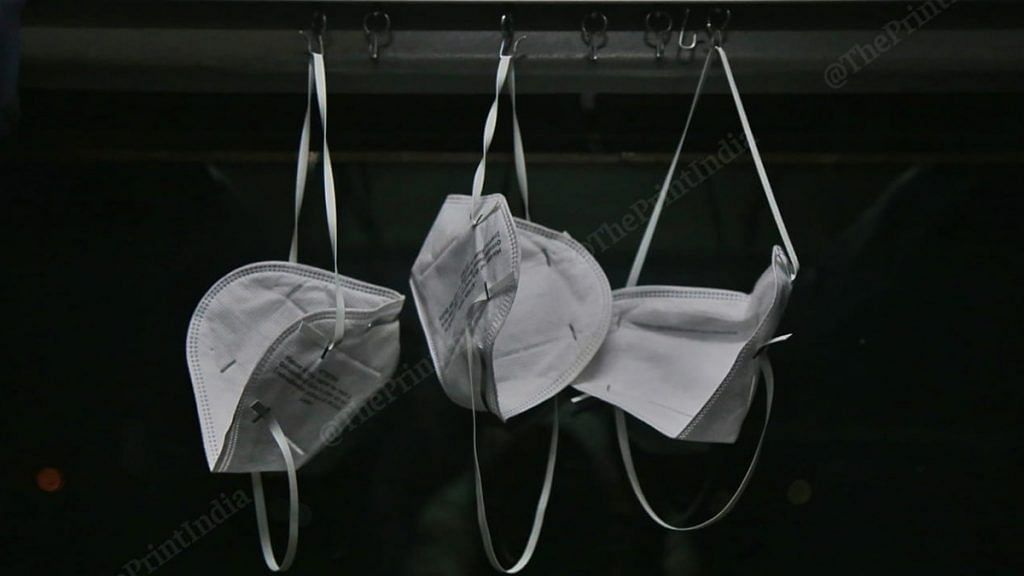New Delhi: Wear masks in areas where social distancing is not possible, the World Health Organization has advised in its updated guidelines, issued Friday, on the use of masks.
WHO Director-General Tedros Adhanom Ghebreyesus announced the changes in a media briefing. “In areas with community transmission, people aged 60 years or over or those with underlying conditions, should wear a medical mask in situations where physical distancing is not possible,” Tedros said.
"Second, in areas with community transmission, we advise that ?????? ???? 60 ????? ?? ????, or those with underlying conditions, should wear a medical mask in situations where physical distancing is not possible"-@DrTedros #COVID19
— World Health Organization (WHO) (@WHO) June 5, 2020
The new advisory, he added, is based on “evolving evidence” and was developed after “extensive consultation with international experts and civil society groups”.
The updated guidelines come four days after a review of 172 observational studies across 16 countries and six continents funded by the WHO found that the use of both N95 or similar respirators or face masks was linked to a major reduction in the risk of infection.
The Covid-19 virus is known to be transmitted through respiratory droplets from an infected person. Research has shown that those who are in close contact (1m or less) from the infected person are at greater risk of contracting the infection.
Also read: Do masks help? Experts say even DIY masks are useful as Covid-19 is unrelenting
What has changed
The WHO had earlier taken a more conservative stance on the effectiveness of face masks in arresting the spread of the infection. “There is limited evidence that wearing a medical mask by healthy individuals in the households or among contacts of a sick patient, or among attendees of mass gatherings may be beneficial as a preventive measure,” the guidelines from 6 April stated.
It further noted that “the use of medical masks may create a false sense of security” and lead to the neglect of other preventive measures. The WHO had recommended the compulsory use of masks for healthcare workers while advising decision-makers to make the rationale clear behind any directive that prescribed its usage for healthy people.
In its updated advisory, the WHO endorsed the wearing of non-medical masks by everyone in public and semi-public settings like shops, offices, social gatherings, schools and places of worship. The same should also be followed in places with high population density or in settings where physical distancing is difficult, such as in public transport.
More importantly, medical masks have to be worn by people who are 60 years or above or those with comorbidities in settings where physical distancing isn’t possible. The guidelines state that the use of masks by healthy people reduces “potential exposure risk” and “potential stigmatization of individuals”, makes “people feel they can play a role” and reminds “people to be compliant with other measures”.
Also read: Testing smartly, community care part of Kerala’s Covid strategy: Health Minister Shailaja
What kind of masks should be worn
The two types of masks mentioned in the WHO’s guidelines are a medical and non-medical mask. According to the WHO, “medical masks should be reserved for health workers and at-risk individuals”. These masks should be certified as per international and national standards and must stop at least 95 per cent droplets while remaining breathable.
Non-medical masks “are made from a variety of woven and non-woven fabrics, such as polypropylene”. The advisory states materials for these masks should be chosen based on filtration or the capture of droplets and the fabric’s breathability. Also, stretchy material should be avoided so as to prevent the filtration from decreasing as the pore sizes increase.
“A minimum of three layers is required for non-medical masks, depending on the fabric used,” the advisory states.
Also read: These nine Indian politicians still don’t know how to wear a mask during the Covid-19 pandemic
